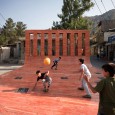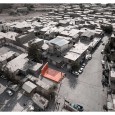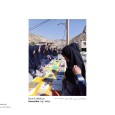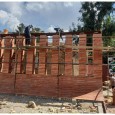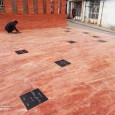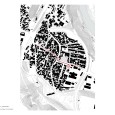Description
This project involved designing a memorial to martyrs with a minimum budget in Sepiddasht, a small town in the Iranian province of Lorestan. Located in the old fabric of the town, the designated site has been used as a cemetery for ages. The site was situated in an urban opening along the town’s main road. The majority of memorials are built as single objects or sculptures in small and big cities of Iran; in other words, they act only as a statue in a city. In this project, the client also asked us to design a commemorative object memorial element that symbolizes the martyrs.
We faced an important question from the very beginning:
Although the budget and time allocated for the design and implementation of this project were limited, how could we produce the most profound effect on the town?
In response to this question, our strategy was to leave behind the stereotype of constructing a sculpture and a single object as the dominant topology of memorials. Instead, we decided to design a stage for displaying urban events to spatialize the memorial so that it could be a highly flexible space for the town and assume various roles on different occasions. This way, it could be more than just a sculpture to the city.
We used a perpendicular plane that would be extended on the ground so that its vertical component could retain its symbolic role. To strengthen this role, we punched eight holes through the plane and placed one cypress behind each opening (i.e., there were eight cypresses). We used the red travertine from Azarshahr to make the “stage” noticeable in the urban fabric. The extended part of the plane on the ground can be used to display urban events. However, we positioned the locations of existing graves on the stage and put one black box on the edge for each punch.
We added new features to the project as a public space by creating flexible spaces to host religious ceremonies and rituals (e.g., Ta’zieh) and providing a space for children to play games, people to hang out, and citizens to gather together and talk. Therefore, it became a symbol representing Sepiddasht. In various urban events, different surrounding surfaces such as the rooftops of nearby buildings, terraces, balconies, streets, alleys, and even surfaces inside adjacent shops can be used as platforms to watch the events. Therefore, this stage expands its roles in the city.
Farsi
Please click on the Link below to read the information in Farsi Language.
Click Here!












